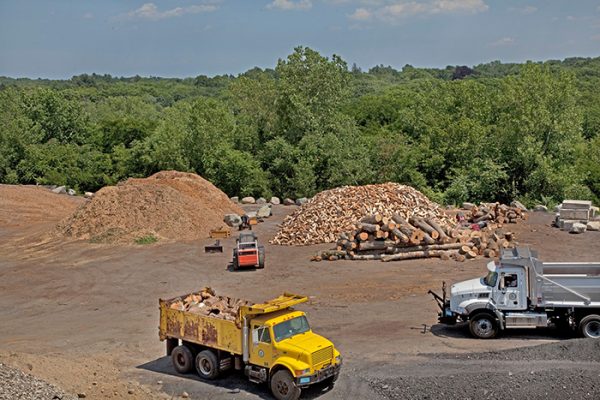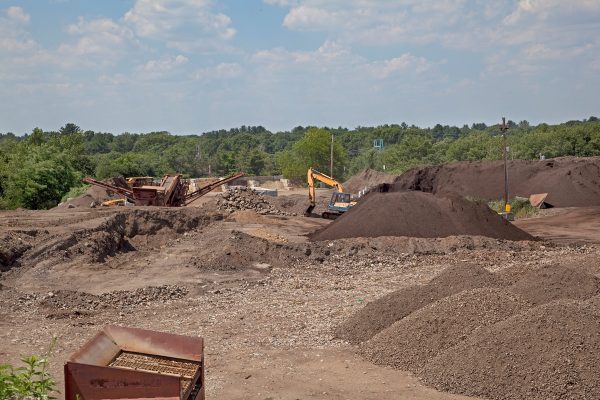
Once upon a time, it was an eyesore belching smoke and noxious smells throughout the neighborhood. Today, Lincoln Park is a lush playground with soccer and baseball fields off Lincoln Street. Constructed with the funds the Lincoln Park Trust raised, the boardwalks located off Worthen Road lead hikers through wild vegetation and marshy areas through an otherwise inaccessible area. Dogwalkers, parents with strollers, hikers, proud parents – many of us enjoy the property.
The Early Years
In 1691, 30 families lived in Cambridge Farms (later to become Lexington), when they were granted their own parish. In 1691, they “voted that a piece of land shall be bought for the ministry and paid for by the inhabitants.” They intended that the minister would be supported by the proceeds from the sale of wood cut from the land and the rental of the land. The wood cut from this “ministerial” land was used to meet the heating needs of the schools and Rev. Jonas Clark (of Hancock-Clark fame).
By the late 1870s, Lexington needed more water. Wells were going dry, and there was insufficient water pressure to fight fires. The town established the Lexington Water Works Company, which allowed it to take water within 495 feet of Lincoln Street on the south side and to take land for reservoirs and general use. During the next 30 years, the town grew substantially. There were many more houses, and extensive farming. The Water Company decided to build a reservoir in the natural basin off Marrett Road near the head of Vine Brook. The new 10-million-gallon reservoir was completed in 1895. In 1903, the town voted to pay the entrance fee to the Metropolitan District system; in 1904, it voted to set apart all the land previously owned by the Lexington Water Works for public purposes. Today, some of it is used for a town beach.
The Dump
In the mid-1900s, residents would burn trash in their back yards, which explains why I have found many old bottles in my garden, although the town did provide municipal garbage collection. According to Sasaki’s Master Plan for Lincoln Park, Lexington, MA, aerial photography shows that dumping was ongoing in 1930. But as Guy Doran points out, “It was easier and cheaper and so very convenient.” Peter Lund recalls his father dropping him off for Sunday School at Hancock Church and going to the Dump on the same trip.
During the 1950s, the Lincoln Street dump was open 24 hours/day. The facility expanded slowly at first, but sometime in the 1950s the site became an official municipal refuse dump. From then on until its closure in 1963, the landfill grew significantly in height and extent. Paul Ross driving into a large craterlike hole. There, Guy says, “You could dump anything and everything. The refuse, which ranged from cars, old furniture and appliances, diesel fuel, asphalt shingles, oil, paint, dead animals, trees, leaves, and garbage, was piled in heaps.” Periodically a bulldozer would push it around.
Lynne Wilson’s family moved to Lincoln Street when she was a junior in high school. She said her father bought 1 ½ acres that included an already-built foundation for $500. Her classmates would sneer, “Oh, you live near the dump!” She went on to say that Lincoln Street was considered the other side of Lexington. Paul Ross talks about the smell of the Dump. Lynn doesn’t remember the smell, “but,” she remarked, “I certainly remember the smell of the smoke when they would burn it off.” The fires would continue underground in the peaty soil. Despite the smell and the fires. Those running for political office would be there on the weekends to shake your hand and ask for your vote.
By 1954, the Lexington Minuteman reported that the “Dump was considered one of the most important problems in town. Smoke from it has been a nuisance to a large neighborhood, and the fire department has been kept needlessly busy controlling the blazes there, and the careless dumping has been an eyesore along Lincoln St.”
In those days, dumps were a source of new friendships; politicians touted their positions; petitions were signed. Dumps can also be a source of amusement. Lynn remembers her husband shooting rats at the Dump. Peter talks about people picking at the Dump. “There was a lot of good stuff to be found there.” Perhaps that is where the recycling movement began!
In 1963, municipal landfill operations were relocated to Tophet Swamp (east of Hartwell Rd.), and the town capped the Lincoln St. site using the grey, slimy dredge from the Mystic River. Later they covered it with blasted rock from the construction of Route 2.
In 1969, there was some interest in rehabilitating the site as parkland. Olmstead Associates was commissioned to prepare a layout of playing fields. The plan called for 11 playing surfaces with an estimated construction cost of $383,000. Although the Olmstead plan was never implemented, probably because of the cost, several smaller funds were appropriated by the town between 1968-1972 to construct the two fields closest to Lincoln St. However, because of the shifting and settlement of the landfill, these fields quickly deteriorated into substandard conditions.
In 1977, the Town of Lexington issued its Master Plan for Recreation and Open Space. From 1985-1986, funds were again appropriated to expand and reconstruct the playing fields for LHS athletic programs. Since then, the fields have been maintained and used heavily for school and community athletics.In 1989 and again in 1996, a wooden boardwalk and fitness path funded by a private endowment administered by the Lincoln Park Committee extended the park. The fields were covered with artificial turf because of leakage from the former Dump. The town’s Engineering Department hired Envirotest Laboratory to do random checks on the land. They found small amounts of methane escaping, so the town put in wells (you can see the spigots) to be safe.
This land has come a long way. As Lynne Wilson says, “It’s a fabulous place for sports.”
Today
We have the Hartwell Composting Facility, where residents and landscapers can take their yard waste, Christmas trees, old bikes, used batteries, and broken concrete. The facility processes thousands of tons of yard waste, wood, and stone into marketable products, such as asphalt millings compost of all gradations, super loam, topsoil, boulders, and woodchips. These products are bought by landscapers, town departments at a special rate! It provides residents with free compost and woodchips for the garden and solar energy via the solar array for the town.
How far we have come from that noxious-smelling, rat-infested Dump.

